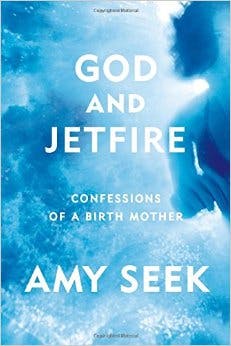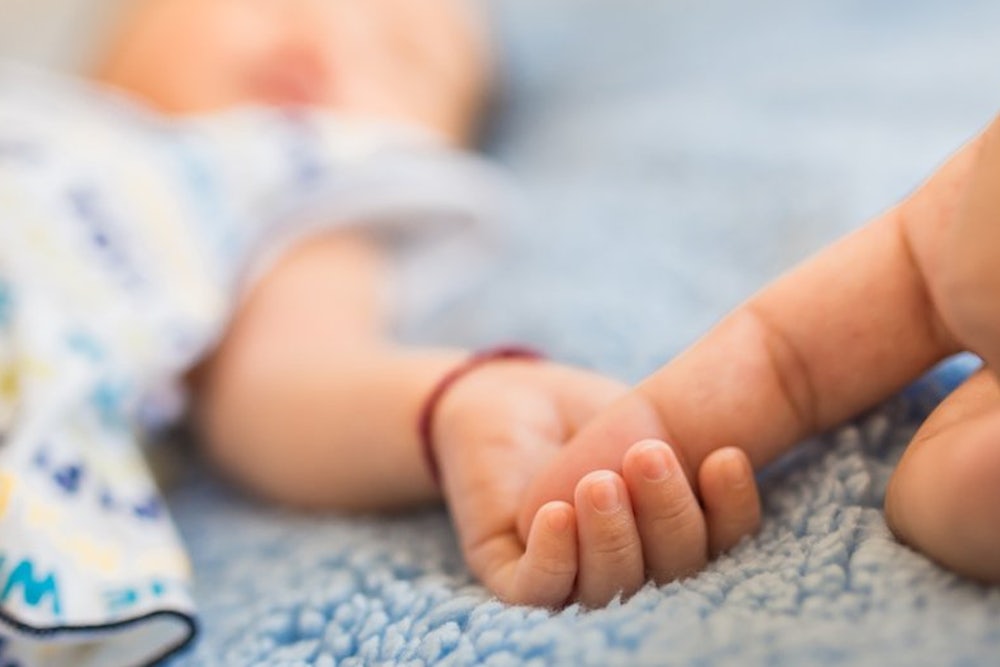It's hard to find an honest account of an open adoption that works: one where adoptive parents and birthparents have agreed that they will stay in touch and share the milestones of their child’s life, and then do so. Most of the birthmothers who have spoken with me over the years did so after planned open adoptions have failed. The adoptive parents may have pulled out, reneged on stated or implied promises, often claiming that, as the child grew old enough to grasp the deep ambiguity of the arrangement, ongoing contact became confusing. Sometimes birthparents draw back. Sometimes adoptive parents appear to get jealous. In most states, the law offers no protection for what is usually a non-binding, voluntary agreement.

The revelation of God and Jetfire: Confessions of a Birth Mother, Amy Seek's lyrical and open-hearted new memoir, is that even in the best of all possible adoption worlds, the wounds of an open adoption resist easy healing; that even when everyone does everything they said they would, with a spirit of honor and trust, everything that follows from relinquishment still ends up being “shaped by … absence.”
God and Jetfire reads as a personal tour of the open adoption process, from selecting a family to navigating ongoing contact for years. It’s also a chronicle that gets at some of the fundamental ethical questions in all adoptions. Though Seek doesn’t dwell on them, the outlines of structural problems are there: the varying state laws that govern when parents can relinquish and how long they have to change their minds; the powerful but often unspoken role that money plays in the process; the fact that unplanned parenthood will disrupt mothers’ lives more than those of their male partners; and the question of how informed any consent can be in a situation marked by inherent power imbalances. And then, aside from these systemic questions, there’s the emotional toll of letting a child go that’s both hard to quantify and to predict, and which Seek spends the majority of the book unraveling.
Compared to countless stories of bad adoptions—adoptions marked by coercion or force, fraud and lies—Amy Seek’s experience appears charmed. Some 15 years ago, when she got pregnant in college, it was with a boyfriend who loved her and was willing to get married. When she declined his proposal, her sister offered to fly home from China to help her raise the child. When Seek opted instead to explore adoption, she encountered a Catholic Social Services worker who spoke to her plainly, giving honest counsel about the pain of relinquishing and the unenforceabilty of open adoption contracts.
Even with this support and good fortune, there are glimmers in Seek’s account of the broader structures that channel many women towards choosing adoptions they later regret. The book opens in a religious crisis pregnancy center, where a volunteer chides Seek, “Don’t you know what happens when you have premarital sex without a condom?” Although she came from a stable and loving family, her childhood in East Tennessee has left Seek terrified of rural poverty, and haunted by images of herself and her child subsisting on dog food. The prospective adoptive parent profiles she reads hint at their wealth and preparedness. Meanwhile, the demoralizing parental budget she calculates using an agency-supplied workbook—which presses pregnant women to account for not just basic living expenses such as rent, groceries and childcare, but also an intimidating list of extras like dry cleaning, magazine subscriptions, cigarettes, union dues, children’s allowances and church tithes—does its intended job and convinces her she’s not ready to raise a child.
Unlike many women, who make the decision in a moment of crisis, Seek was a self-possessed, college-educated woman with a number of resources at her command. Helped by her sister and her by-then ex-boyfriend, she waded through scores of adoptive parent profiles. She confidently challenged potential “matches” to answer exhaustive lists of personal questions, and traveled to interview candidates in person. She was smart enough to recognize the change in tone when would-be adoptive parents began speaking in cautious legalese about what an open adoption might look like. She recognized the self-interest of families who urged her to give birth in a state with a short window to revoke adoption consent. (Ohio, where she ultimately delivered, allows mothers 24 hours to change their minds, whereas some other state laws give a month or longer.)
Despite her planning, Seek was entering into an arrangement that was, at the time, relatively new, unchartered territory. After a slow start in the 1980s and ’90s, a recent study found that 95 percent of U.S. domestic adoptions today are open to some degree. That’s a far cry from the almost universally closed adoptions of decades past, when agency policy usually prevented birthparents and adoptive parents from knowing each others’ names, and when most states sealed adoption records and forbade adoptees from accessing their original birth certificates. Researchers and adoption professionals have recognized the benefits of openness for both adoptees and birthmothers: Adoptees adapt better, birthmothers report greater peace of mind.
But what open adoptions look like in practice can vary widely. Seek was lucky in finding a family that felt right—a moment that unfolds, she writes, “as magically as I have ever fallen in love.” They turn out to be every bit as welcoming and dedicated as her intuition suggested: a family that not only makes room for her and the child’s father at the table, but a space for her to stay on frequent visits, and a willingness to travel across the country to foster a relationship with their adopted son’s extended kin.
On the other hand, Seek hadn’t foreseen the emotional landscape she found herself in after adoption. The huge amount of variation between adoptions, and the gamble of entering an unenforceable agreement, involving profoundly complex human relationships, makes it almost impossible to plan for how the aftermath of an adoption will feel. After her son was born, she agonized over her choice, angering her ex-boyfriend and family, and weeping with the prospective adoptive mother, Paula, over the old zero-sum game of adoption, when two families love a child, but only one party “wins.” With characteristic beauty, Seek writes, “We stood like tired boxers, clinging to each other to stop the beating. I could end her suffering, some of it, but only at my own expense.” In the end, as we know, she lets her son go. And in so doing, she becomes a member of the sad club of birthmothers, invisible “collateral damage” in a world where adoption is thought of primarily as “a means of getting children … not [losing] them.” Though she’d decided on adoption to protect the future she planned for herself, her new motherhood convinces her immediately that she’s made a mistake. “I wished I hadn’t made such good plans,” she writes.
For many birthmothers at this stage, there’s a pressure to remain compliant: to avoid complaining or talking about their regrets, and instead to practice a Panglossian gratitude, lest their relationship with the adoptive parents closes down. Some birthmothers (a controversial name in itself, which many such mothers reject for alternatives like “mothers of origin” or the starker “mothers of loss”) even have a name for this state. They call it the “adoption fog,” which they say settles around women who chose to relinquish, and who tell themselves for years that they've done the right thing. The predicted outcome is obvious: that one day the fog will lift and birthmothers will be left to face years of suppressed trauma.
The years after Seek’s adoption, as told through her elegant and ungrudging approach, show a story of disciplined generosity on both sides. This seems like the best roadmap offered to date for making the “unnatural partnership” of an open adoption work. There are challenges (“the animal complications of what we’d done,” Seek writes)—like her early realization that visiting her son is a two-sided performance where she’ll always feel watched; the quiet assertions of ownership from both the adoptive parents and Seek as he grows older; and Seek’s halting, pained progress towards expressing her love. But there is also a shared presupposition of good will that helps them accept risks and overcome misunderstandings.
Still, she finds it difficult to live in an arrangement that feels like an ongoing experiment. You don't need to be a citizen of “Adoptionland”—as some in the adoption community have come to call their unmapped country—or even necessarily a parent, to appreciate what Seek has mourned, and sometimes celebrated, for so long. The heart of God and Jetfire isn’t, ultimately, about the litany of systemic problems in adoption, but rather the more universal experience of making a hard, unclear choice, and having to live with its outcome.
“We're deciding all the time,” Seek writes. “We're always at a fork in the road, abandoning a universe of possibilities for the sake of just one, on the basis of inadequate information. And still we continue, as though a thousand futures were not crumbling with every step."
